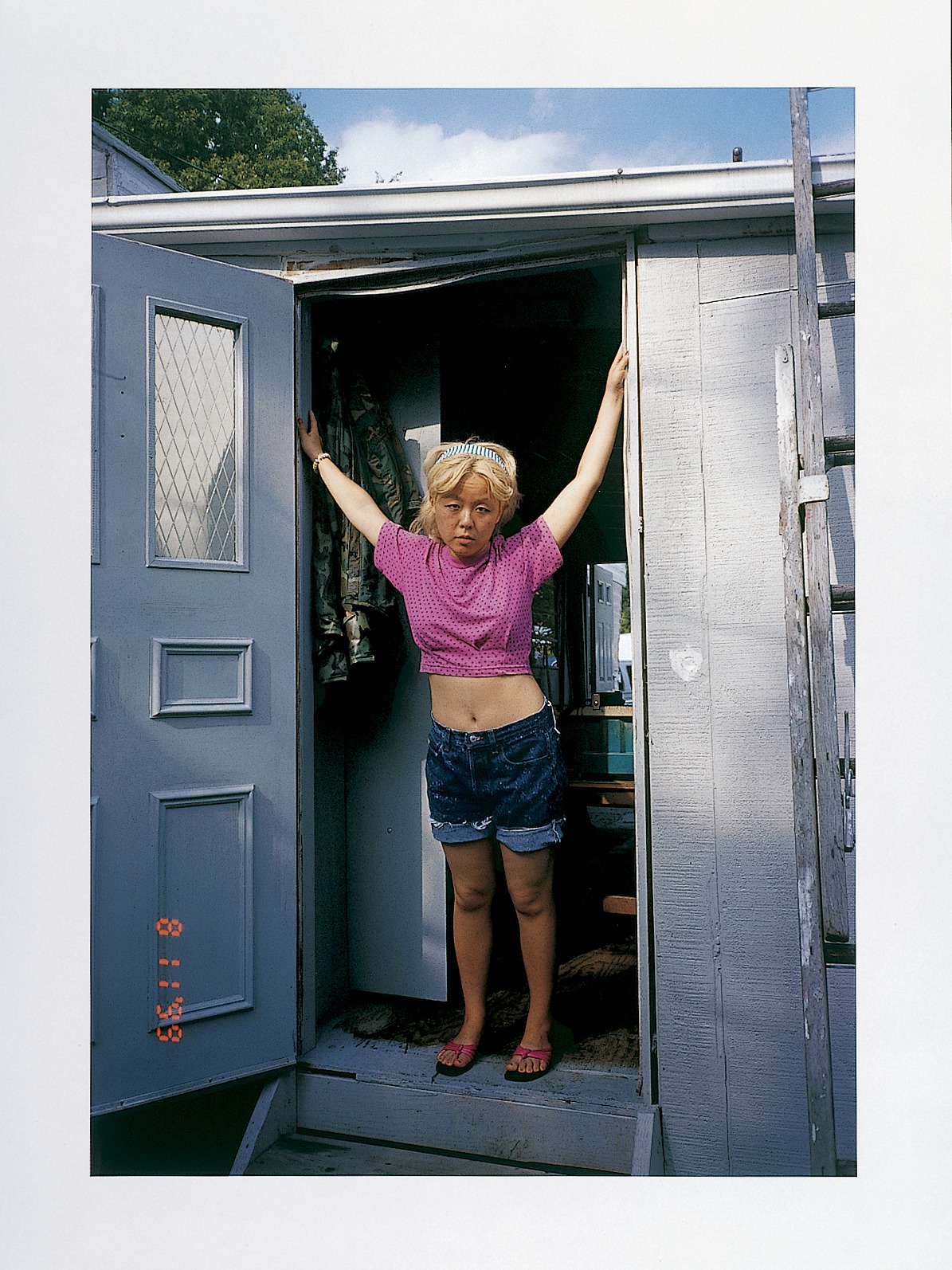Aestheticized Lives and Labor
Nikki S. Lee
The Ohio Project (8), 1999
Fujiflex print on paper
40 x 30 in.
Hood Museum of Art, Dartmouth College: Purchased through the Elizabeth and David C. Lowenstein ’67 Fund; 2007.59
© Nikki S. Lee
Despite both being photographers, Nikki S. Lee and Sebastiao Salgado take two very different approaches to their work. Nikki S. Lee lives among various identity groups—sometimes defined by ethnicity, other times by age, special interests, and so on. After weeks of immersion with these groups, dressing like them and living like them, she begins to ask members of the group to photograph her in these settings with an ordinary camera. In contrast, Sebastiao Salgado’s work falls neatly in the category of social documentary, photographing those from all over the world living in globalized poverty using analog cameras and black-and-white film. However, both share an artistic practice that involves exposing the lives—and in some eyes, perhaps, even exploiting the labor—of people other than themselves.
The Hood’s photograph from Lee’s Ohio Project documents the artist’s time among residents of a trailer park in southern Ohio. In this photo, she adopts a blond wig and cuffed jean shorts, and leans forward with her arms outstretched, holding onto the molding of her front door. Her expression is hard to read. Undisturbed by the vulnerability of her exposed belly, she blocks off the entrance to her trailer. Her hair, clothing, trailer, and the camouflage jacket that hangs behind her all style Lee in the guise of a stereotypical rural, lower-middle-class white American. What makes the photograph compelling and different—what makes it art—is the fact that Lee is most evidently not white, not from the South, but an artist from South Korea based in New York City. Lee’s race makes her outsider status quickly apparent. Her adoption of the trailer park lifestyle is merely a costume. It is not her day-to-day reality the way it is for the people who live in these communities. While she befriends these people who are central to her artistic practice, and they allow her into the intimate aspects of their lives—sharing their community and culture with her—the emotional labor they put into accommodating Lee is never compensated for. Instead, Lee sells images of herself in the costume of other people’s lives, enlisting their labor to validate her performance, and profits from them.
Sebastiao Salgado
Brasil (Hand, Serra Pelada), 1986
Gelatin silver print
16 x 20 in.
Hood Museum of Art, Dartmouth College: Purchased through the Fund for Contemporary Photography. Selected by participants in the seminar “Museum Collecting 101”: Betty Baez-Melo, Class of 2005, Gabriela Jaramillo, Class of 2004, Marilyn Nyanteh, Class of 2005, Lia Rothstein, Holly Shaffer, Class of 2003, and Yin Zhao, Class of 2006; PH.2002.59
© Sebastiao Salgado & Contact Press images
Unlike Lee, Sebastiao Salgado started out as a photojournalist. His photograph Brasil (Hand, Serra Pelada) is alternately titled Transporting Bags of Dirt in the Serra Pelada Goldmine. It depicts an exhausted gold miner in Brazil who pauses to catch his breath after climbing up stories of quarried land. He is covered in dirt and grime and looks on the brink of collapse. The unnamed miner’s horrendous working conditions are aestheticized by Salgado’s formal composition of the photograph. The miner is framed by the angle of the cropped out hand, the lines of the ladder, and the leveled horizon line behind him. The heightened contrast in the photograph adds an aura of grandiosity, intensifying the dramatic moment. The grueling work conditions of laborers living in globalized poverty is perfectly captured and artistically rendered by Salgado for Western audiences to find aesthetic pleasure in, offering them a glimpse into lives much different from their own. Just as Lee’s artistic success came from her adoption of the identities of many racial groups and communities outside of her own, Salgado’s photojournalism practice rests on capturing images of extreme poverty set in foreign lands. As artists, Lee and Salgado are able to profit from images depicting the lives and labor of groups traditionally configured outside of the art-viewing public.
Shared Home, Shared Studio
Art as Labor




